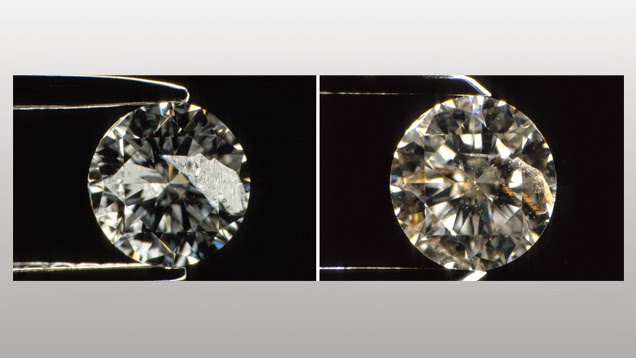A diamond is one of the finest creations of nature. The precision
with which these diamonds are formed in the core of the earth is admirable.
But, these spectacular diamonds are often tainted with imperfections. These
flaws are either in the form of color or clarity characteristics.
Imperfections which pertain to the color
of the diamond is due to the impurities present in the gem or due to
distortions in the crystal structure.
Mostly, yellow or brown diamonds are treated to transform them into
colorless diamonds. The yellow or brown tint is due to the presence of
nitrogen. Similarly blue/greyish diamonds are also treated which owe their
color to boron. On the other hand are the inadequacies in the clarity of a
diamond. Treatments for clarity either conceal the flaws or remove them.
This post will talk about in detail the various treatments carried
out on diamonds.
Treatments for
color enhancement:
Irradiation: under this process the diamonds are exposed to radiation
to alter their color. Radiation is a process of transmitting energy in the form
of waves or particles. In the laboratories diamonds are bombarded with neutron
or electron particles which causes distortions in the crystal system of a
diamond. This distortion often results in beautiful colors. Common colors which
irradiation produces are blue, green, yellow, orange and black. Irradiated
diamonds are further heated at times to achieve particular colors. The
treatment can be identified by gem testing labs.
Coating: it is a procedure in
which thin films are applied on the diamond, specifically on the pavilion areas which affects the face up look of the diamond. This treatment can be
stimulating for the gemologists to find out. The loop holes of this treatment
are, when it is viewed under high magnification sometimes the air bubbles
trapped between the diamond surface and film is visible and also if the coating
has got scratched due to wear and tear, it is identifiable.
High Pressure High Temperature: this is the most commonly used method
for modifying the color of diamonds. This technique is applied mostly to Type
2A diamonds which usually have a yellowish or brown tint, to produce more
marketable colorless diamonds. This treatment is equally challenging for the
gemologists to identify.
Treatment for
clarity enhancement:
Laser Drilling: this procedure uses lasers to reach the inclusions in
the diamond which have a negative impact on the visual appeal. Once the laser
reaches the inclusion either it is bleached with acids or filled with
substances that can conceal the inclusion. This treatment often leaves
“drill-holes” which helps in identifying the treatment. These drill holes are
basically tiny openings at the surface.
Fracture-Filling: feathers are one of the most common inclusions seen
in the diamonds and they affect the appearance to a great extent. To improvise
the appearance of the diamonds fractures are often filled high RI glass filling
which makes it difficult for the gemologists to identify the treatment. But, in
dark field illumination often the flash-effect can be noticed. Flash effect
displays combination of colors like orange and blue, orange and yellow or
sometimes pink and purple.
Enhancement of gem material in todays’s time is a common affair, but
what’s not common, is the disclosure. Disclosing a treatment will always prove
to be beneficial for a trader. It not only instils confidence in the consumer,
it even helps them understand the reason why the gem material was treated and
how the treatment has made the gem more appealing and durable. Some treatments
fade away with time, so it is the responsibility of the trader to inform the
consumers about any such treatments. Ethical treatments and disclosure will
always have a positive impact on the gem market and the end users.





